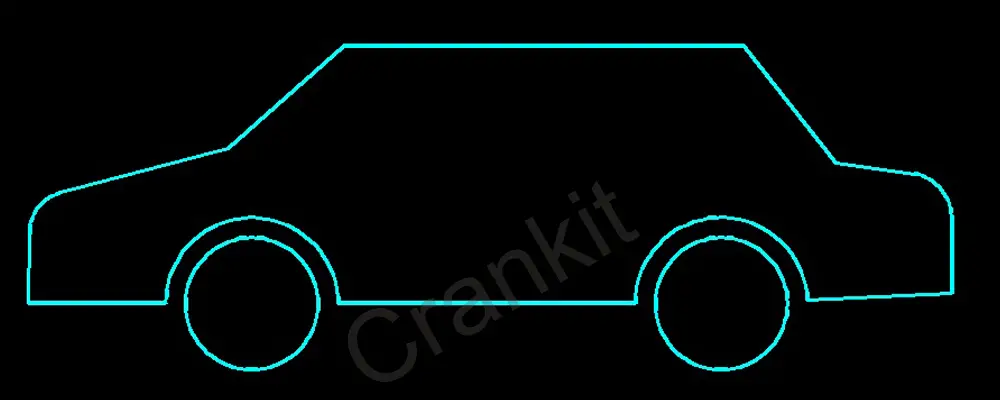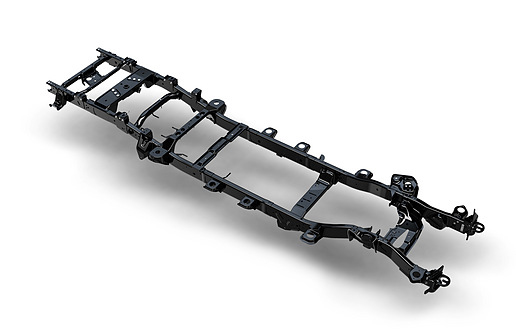What Makes An Automobile or a Motor Vehicle?
What is an Automobile? This word consists of two ancient Greek & Latin words. The word ‘autos’ means ‘self,’ and the term ‘mobilis’ means ‘movable.’ An automobile is a machine that can move on its self-power or a self-propelled vehicle. Besides, it produces the power needed for its propulsion from within and NOT from the outside. Manufacturers specifically built an automobile for use only on roads. Hence, by definition, it is a machine designed to operate on the road or ground.

Furthermore, automobiles have evolved since their inception. Therefore, there are many synonyms for an automobile. They are ‘Automotive,’ ‘Auto,’ ‘Autocar,’ ‘Autobuggy,’ ‘Car,’ ‘Motor,’ ‘Motor car,’ ‘Motor vehicle,’ ‘Motorcoach,’ ‘Motor wagon,’ and a ‘Horseless Carriage.’ Moreover, an automobile is a self-propelled vehicle used for transportation purposes on the ground.
Construction:
Furthermore, an automobile is a piece of complex machinery. Hence, manufacturers pay great attention to performing it safely, economically & efficiently. An automobile is a unit or equipment meant for transportation. It mainly consists of a chassis/frame and a body. In addition, it has power-generating and transmitting units mounted onto it. Besides, the tires and wheels support the chassis/frame through the springs and axles. These are a part of the front & rear suspension system.

Furthermore, the chassis/frame holds various components/sub-assemblies together correctly. Besides, the vehicle body provides protection/comfort to occupants. An engine produces power and supplies it to wheels through clutch/fluid coupling and gearbox. However, the automobile propels by the friction/contact between the road and wheels.

Evolution of Automobile:
- In 1769 – French engineer Captain Nicholas Cugnot built the first road vehicle. It propels by its own power. However, it was a three-wheeled, four-seater vehicle with a steam engine. Nevertheless, it managed to reach a speed of 2.5 mph for 15 minutes.
- 1880 – German & French engineers developed an internal combustion engine vehicle. The present-day automobiles are the further development of this vehicle.
- 1885 – Furthermore, Karl Benz of Germany built a tricycle driven by an internal combustion engine.
- 1885-86 – Gottlieb Daimler patented the internal combustion engine. He later started running it in one of the vehicles.
- 1895 – Charles E. Duryea and Elwood J. Haynes developed experimental automobiles in America.
- 1895 – Furthermore, Panhard and Levassosr developed a car in France. It had incorporated the automobile’s main features as seen in today’s cars.
- 1890-95 – European designers also became active in developing cars.
- 1895 – Panhard designed a vehicle with an engine in front of the chassis in France. It had a sliding gear transmission, brake pedals, clutch, and an accelerator.
- 1900 – The automobiles’ improved design made the general public accept them as a handy form of transportation.
- 1906 –Furthermore, manufacturing, production, and sale of automobiles became a popular business.
- 1908 – Ford started a model with an initial production target of 20,000 vehicles. It was unheard of the output of that time.
- 1920 – Moreover, refinement in design came. Spark-ignition gasoline engine & sliding gear transmission was common. The employment of water-cooled systems was also common.
- 1920 – Present Day – Automobiles continue to evolve in all the departments.
Generally, manufacturers classify vehicles into three main types:
- Single unit vehicles or load carriers.
- Articulated vehicles.
- Heavy tractor vehicles.
With respect to different applications, Auto-makers classify various types of automobiles as under:
According to the Application:
- Auto-cycles and mopeds – for very short distances and generally solo-driven.
- Scooters and Motorcycles – for moderate distances and up to two passengers (rider+pillion).
- Cars, Station Wagons, Vans, and Pick-ups – for long distances, up to 7-10 passengers, and moderate load.
- Lorries (Buses) and Trucks – for long distances and heavy loads.
- Tractors – for short distances and moderate to heavy load.
- Other automobiles such as earth moving equipment – for short distances and heavy to very heavy loads.
According to load-carrying capacity:
- Heavy Transport vehicles or Heavy Motor Vehicles: Buses, Coaches, Trucks, Tractor.
- Medium Transport vehicles: Tempo, Minibus, Station Wagons, Vans.
- Light Transport Vehicles or Light Motor Vehicles: Cars, Jeeps, Minivans.
- Earth-moving equipment: Excavators, Backhoe Loaders, Bulldozers, Skid-Steer Loaders, Trenchers.
According to the fuel used:
According to wheels and axles:
- Two-wheelers
- Three-wheelers
- Four-Wheelers
- Six-wheelers
According to the number of axles:
- Single axle
- Twin axle
- Triple axle
According to the Direction of Steering:
- Left-hand drive
- Right-hand drive
According to the Drive:
- Front-wheel drive – most cars
- Rear-wheel drive – most wagons
- Four-wheel drive – Most SUVs
- All-wheel drive – Some SUVs
- Six-wheel drive – Special vehicles such as Unimog
According to the Engine’s motion:
- Reciprocating – Piston engines
- Rotary – Wankel engine, Gas turbine
According to Transmission:
- Conventional/Manual
- Semi-Automatic
- Automated Manual Transmission (AMT)
- Fully Automatic Transmission
- Continuously Variable Transmission (CVT)
According to Suspension Design:
- Conventional Suspension – Rigid Axle
- Independent Suspension – Coil, Torsion bar, Pneumatic
According to Body type & number of doors:
- Sedan – Two or four doors
- Hatchback
- Convertible
- Station Wagon
- SUV
- Van
Generally, the following components make up an Automobile:
- Basic structure or framework – chassis & frame.
- Source of energy – Engine or power plant.
- Transmission and power train – Gearbox, differential, drive systems.
- Super-structure – Vehicle body.
- Auxiliaries – Fuel system, Ignition system, Lubrication system, Cooling system, Electrical system.
- Controls – Accelerator, Clutch system, Brake system, Steering system, Gear shift lever, Headlights lever, Engine start-stop switch, Horn button.
- Indication – Dashboard, instruments, gauges, indicators.
Specifying an automobile or motor vehicle on the following factors:
- Type – Whether it is a scooter, motorcycle, car, lorry, truck, or bus.
- Carriage capacity –
- For passenger vehicles – whether it is 2-seater, 3-seater, 4-seater, 7-seater, 9-seater, 10/11-seater, etc.
- For commercial vehicles – whether it is ½ tonne, 15cwt, 1 tonne, 5 tonnes, 12 tonnes, 40 tonnes, etc.
3. Generally, the manufacturer’s nameplates include Ford, Mercedes Benz, BMW, Toyota, Tata, etc.
4. Model – Besides, there is a model name also. Generally, the manufacturer’s name is for a specific range of vehicles such as Outback, Camry, Civic, GLE, X1, etc.
5. Drive – whether it is a two-wheel drive, four-wheel drive, or all-wheel drive. Thus, it indicates how many wheels directly get engine power.
6. Driveability – whether a Left-Hand drive or a Right-Hand drive.
Resistance to motion:
While traveling, an automobile or a motor vehicle faces resistance to motion in various forms. Furthermore, the engine or power plant provides a thrust or tractive effort at the driving wheels. It varies at different engine speeds and gear ratios. However, it is mainly required to overcome the forces opposing the vehicle’s motion. This resistance is known as tractive resistance. It is the sum of three resistances acting on a vehicle. However, these resistances obstruct the proper movement of the vehicle.
These are –
- Rolling and frictional resistance
- Gradient resistance
- Air or wind resistance
However, this resistance value depends on various factors. Besides, manufacturers must design an automobile or a motor vehicle to overcome these resistances without much effort. So, they employ specialized & trained engineers to design the automobile or a motor vehicle. Some of them have specialization in power generation & transmission, while others have a specialty in body & aerodynamics.
In conclusion, designing an automobile is a specialized task and needs many resources. Therefore, many students take technical courses such as automobile engineering to make a career in this field.
Following are some of the top universities offering the Automobile Engineering courses:
- HAN University of Applied Sciences, Netherlands
- Manchester Metropolitan University, UK
- Coventry University, UK
- Vilnius Gediminas Technical University, Lithuania
- Hamk University of Applied Sciences, Finland
- Clemson University. Clemson University
- Kettering University
- Lawrence Technological University
- Minnesota State University, Mankato
- University of Michigan-Dearborn
- Indian Institute of Technology (IIT), Delhi
Watch an automobile or a motor vehicle in action here:
Read More: Engine Design & Classification>>
